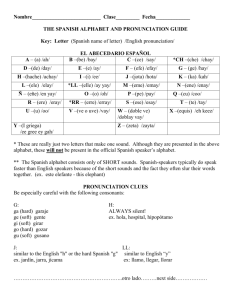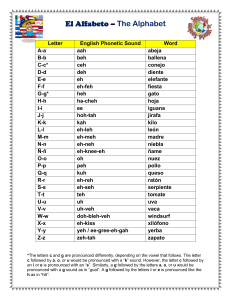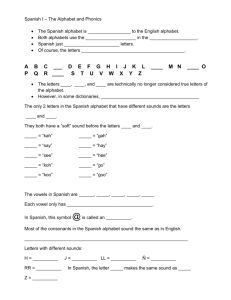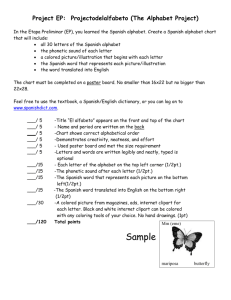File
advertisement
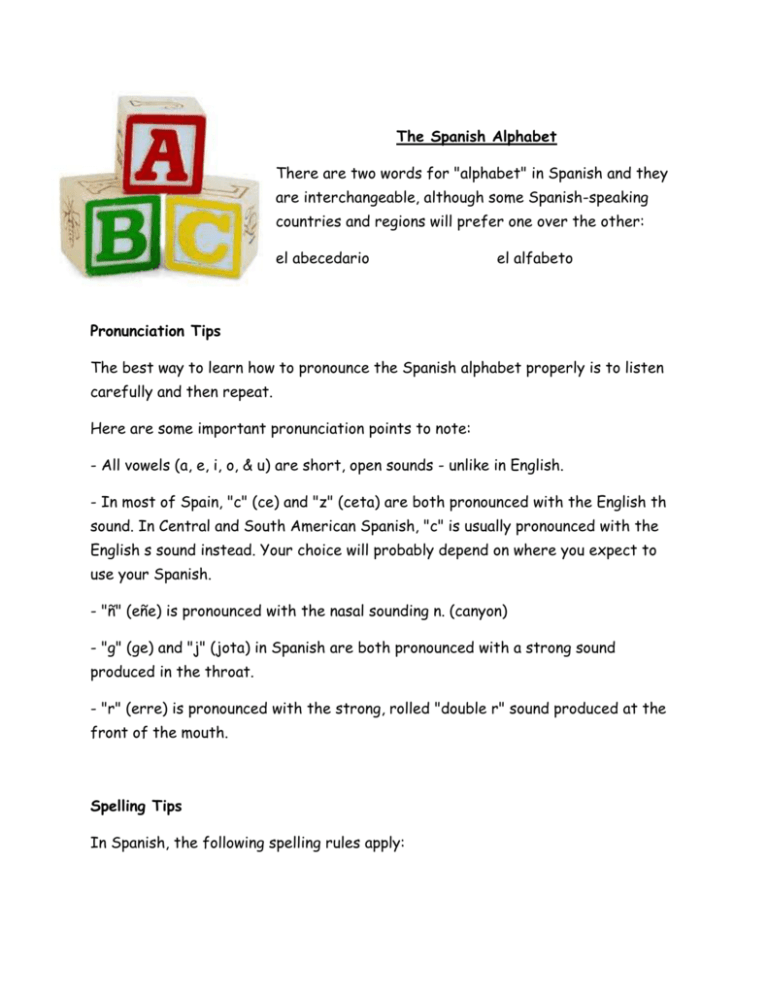
The Spanish Alphabet There are two words for "alphabet" in Spanish and they are interchangeable, although some Spanish-speaking countries and regions will prefer one over the other: el abecedario el alfabeto Pronunciation Tips The best way to learn how to pronounce the Spanish alphabet properly is to listen carefully and then repeat. Here are some important pronunciation points to note: - All vowels (a, e, i, o, & u) are short, open sounds - unlike in English. - In most of Spain, "c" (ce) and "z" (ceta) are both pronounced with the English th sound. In Central and South American Spanish, "c" is usually pronounced with the English s sound instead. Your choice will probably depend on where you expect to use your Spanish. - "ñ" (eñe) is pronounced with the nasal sounding n. (canyon) - "g" (ge) and "j" (jota) in Spanish are both pronounced with a strong sound produced in the throat. - "r" (erre) is pronounced with the strong, rolled "double r" sound produced at the front of the mouth. Spelling Tips In Spanish, the following spelling rules apply: The only double consonants found in Spanish words are "ll", "rr", "cc" and,occasionally, "nn". - The sound produced by "cc" is similar to the "cc" sound in the English word "accept", however, in most of Spain the second c is pronounced like the English th (like "ac-thept"). - The double n, "nn", is only found when a word begins with the prefixes con-, enor in-. There is no difference in pronunciation between a single n and a double n. Exceptions to these rules are found in foreign words that are creeping into the Spanish language. However, they are few and far between. The English "ph" letter combination (instead of "f") does not exist in Spanish. Helpful Tips When Using Spanish Dictionaries The letter combinations "ch" and "ll" used to be part of the Spanish alphabet they were separate "letters" in the Spanish alphabet as recently as the early 1990s. Therefore, the Spanish alphabet used to have 29 letters - now it has 27. Some older Spanish dictionaries - as well as the Spanish section of Spanish-English dictionaries - still have dedicated sections to words beginning with "ch" and "ll". They come after the letters "c" and "l", respectively.


